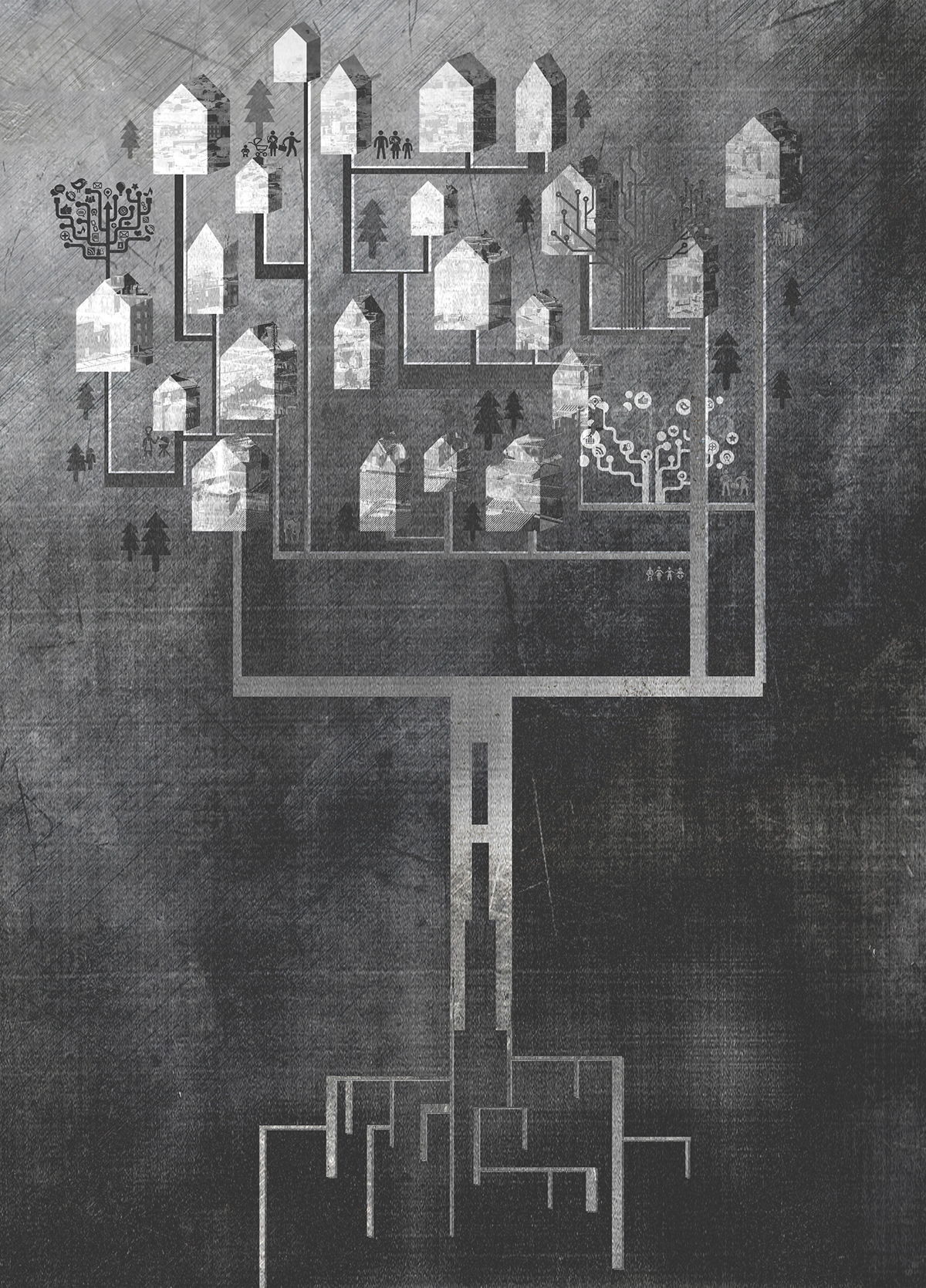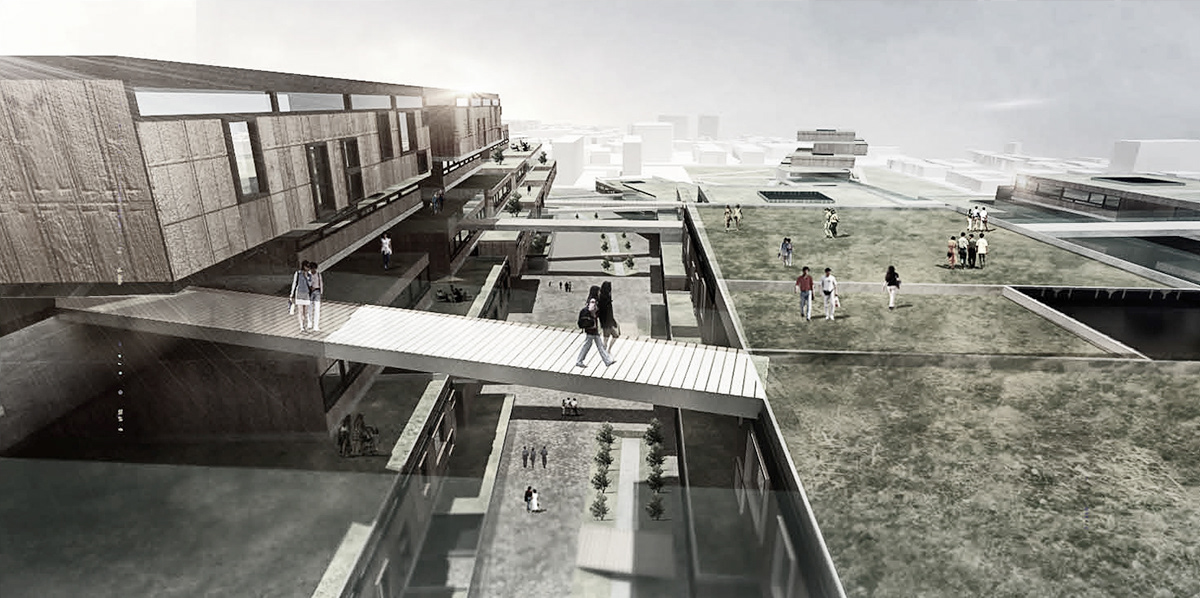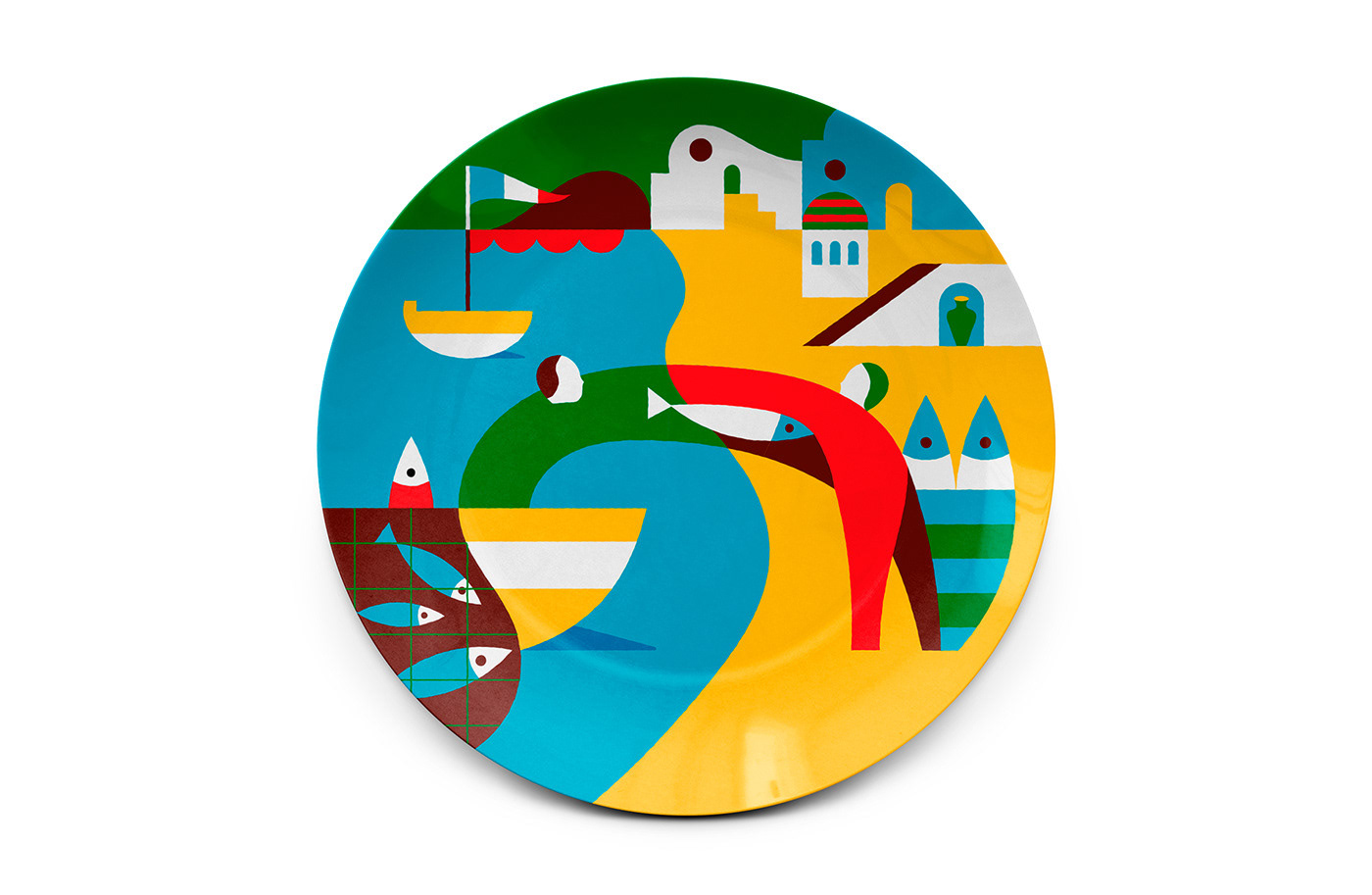
A city has its consumption and production to sustain its life which in specific is its population. Before 1990, city had solely consumed without a glance to its produced waste, bit by bit was growing up by geometric progression along with city’s population and explosion of technology. Since 1992 World Summit on Sustainable Development, the transition to sustainable production and consumption system has been signed as the global priority and address the imbalance between these two poles. Apparently, humankind has been trying to solve the problem, or at least concealing it, but then the blamed villain never could be sound asleep, the amount of waste is still going up while the world’s capacity stays the same. Again, this growing issue link to the system of rhythms we mentioned before, that should not be considered itself as the evil part must be expelled but actually just another axiom which is unavoidable and predictably articulated to overall machinery.
In his essay, vision in motion (The landscape urbanism reader, 2006), Christophe Girot argued that in the movie about beautiful sceneries we always move from one landscape to another one without paying proper attention to the space in between those traditional landscape, and that those spaces in between should be considered more and be as potential as the obvious landscapes. Waste is semantically wasteful if they are distributed around piece by piece or pile by pile waiting to be burned then emitted to ruin the environment, otherwise if they are collected systematically in articulating places ready to be revival and useful again, then they could be granted as potential in between spaces.
In his essay, vision in motion (The landscape urbanism reader, 2006), Christophe Girot argued that in the movie about beautiful sceneries we always move from one landscape to another one without paying proper attention to the space in between those traditional landscape, and that those spaces in between should be considered more and be as potential as the obvious landscapes. Waste is semantically wasteful if they are distributed around piece by piece or pile by pile waiting to be burned then emitted to ruin the environment, otherwise if they are collected systematically in articulating places ready to be revival and useful again, then they could be granted as potential in between spaces.

Within the discourse on systematic connection happening inside a city, we could adapt McDonough’s notion to our architectural concept, “building as a tree and city as a forest”, this phrase has nothing to do with the undulated and organic appearance but the way a building and a ciy work, separately and coincidentally, one in many other ways to draw attention of people who work with city’s issues to a more general view that is to think about city as a whole alive entity, an organism which has circulation of production and consumption by means of recycling output into input in many different ways to avoid harmful loss.

Japan with its richness in culture and virtue of solidarity, has developed a strong and wealthy country by a major export industries including automobiles, consumer electronics, computer, semiconductors, copper, iron and steel. Facing the same problem with other powerful developed countries, industrial era helped nation to accumulate income but simultaneously remain and keep producing waste. Kitakyushu is part of one Japan’s four largest industrial zones, and with its key steel chemical, and other industries, played an important role in the modernization of Japan in the 20th century. The city confronted serious environmental pollution from that rapid economic growth in heavy industries, but thanks to the combined efforts citizens business, research institutions and government, the city was able to overcome this problem by reinventing itself a center of the environment and recycling industries. And as an attempt on reducing damage and aiding the environment, Kitakyushu raised a competition and take JONO as its problematic site to represent a plan helping recover the city.

Circulation trait of a so-called sustainable project should happen in both two levels of project itself and city with project. Firstly this project is able to recycle the waste produced by itself, by this means the more diversity of functions inside, the less loss of waste and emission from transportation. A circulated arrangement of functions that facilitate the recycling process and maintains proximity between mutual facilities which support each other, has been though on both vertical and horizontal dimension. Secondly it could handle some of the waste from its neighborhood and act in a chain of designated sites as they are the heart and liver of city, doing in both direction of receiving and producing energy.

On the surface, lifting an dislocating parts in an even and flat aligned big shape which contains many smaller blocks will generate the flexibility in movement and assist the light and wind receiving process. At the same time, this attempt will break the regularity of big mass shape into well separated spaces without rigid fences that, in turn, still assure the privacy and territorial production while keep the ability of seeing through and connection between them. This picking up action is operated with a thought kept in mind to open the entrance axis as the main skeleton which is more dominated than the other lifted up spaces.The push and pull arrangement also leaves more terrace spaces between each floor without making extra balconies and still guarantee the shade and natural ventilation.






Water reservoir inside area is able to filter by appropriate plants


Title: Tree life
Catalogue: Competition project - Urban design
Institution: Kitakyushu university (Kitakyushu, Fukuoka Japan)
Evaluation: 1st Frize
Function: Complex function (housing)
Project area: 132.000 m2
Project year: 2011
Catalogue: Competition project - Urban design
Institution: Kitakyushu university (Kitakyushu, Fukuoka Japan)
Evaluation: 1st Frize
Function: Complex function (housing)
Project area: 132.000 m2
Project year: 2011



